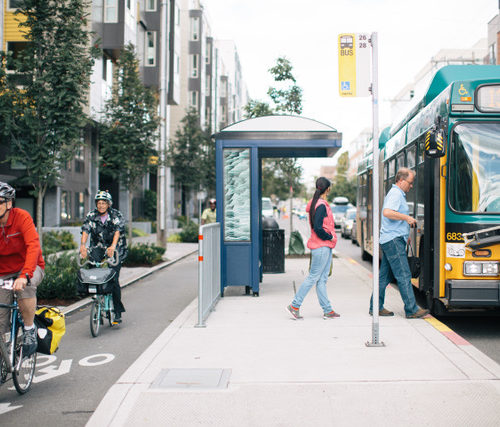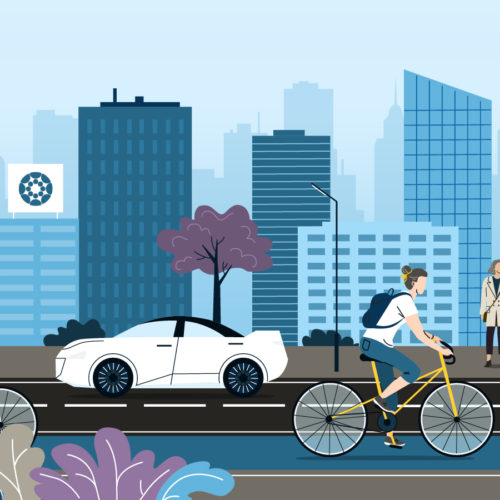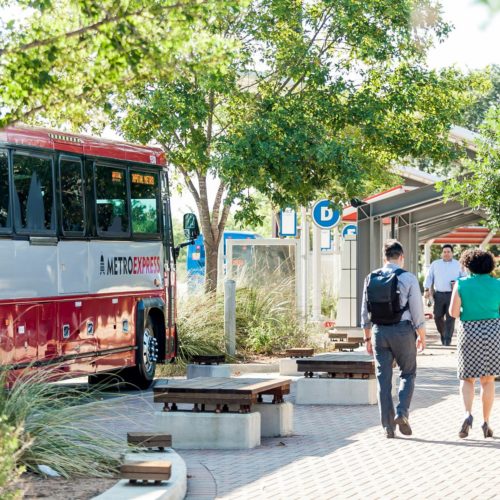The Colorado capital kickstarts a mobility transformation throughout the city.
This year, Denver’s Department of Transportation and Infrastructure (DOTI) will build connected bicycle networks in three targeted neighborhoods that could spark improvements in other parts of this sprawling city.
Accelerated construction began in 2019, when Mayor Hancock committed to building 125 miles of new bikeways city-wide. The effort, funded by a voter-approved mobility bond from 2018, allowed DOTI to move the planned network beyond the pages of their Denver Moves Bicycle Plan and into reality.
In only 24 months, the Colorado capital increased the pace of project delivery, and by the end of 2021 had completed 100 miles of new bikeways spread among every district.
Following the success of this work, city officials are now refining their goals and applying the lessons learned during implementation to three targeted neighborhoods dubbed “Community Transportation Networks” by DOTI planners.
What are Denver’s Community Transportation Networks?
The Community Transportation Networks (CTN) are a focused effort to fully construct neighborhood-centered networks of connected bike facilities that make it comfortable, safe, and accessible for residents to ride bikes in their nearby neighborhood. Denver leaders believe that this focused approach will more quickly result in increased bicycle riding (and bring the health, economic, and environmental benefits that those outcomes achieve) than the traditional implementation methods of evenly distributing projects thinly across the city.
“We are a growing city … and so we know that it’s critical for us to offer other options,” said Jennifer Hillhouse, director of transportation and mobility planning at DOTI. “People will continue to drive. But to serve our residents, we need multiple options for people to get around our city in a safe way.”
Focusing efforts to quickly change the way streets are designed in concentrated parts of the city meant that DOTI staff would need to present, evaluate, and coordinate real trade-offs with these neighborhoods (loss of street parking, narrowing of travel lanes, and new traffic patterns, to name a few), and do so in a way that provided authentic opportunities for community members to give feedback and avoid forcing projects that did not meet community needs or desires.
The benefit of approaching this work with a “network” focus meant that DOTI planners and community advocates did not need to develop individual talking points, meeting strategies, or messaging tactics for each separate street corridor. Instead, they were able to highlight and showcase the entire network of bikeways as a single project, engaging community members from the entire neighborhood that use those streets, not just the people that live or work on the project corridors.
A network-focused approach also offered the benefit of communicating with more community members than the traditional street improvement process normally produces. Working together, DOTI and the Denver Streets Partnership – a coalition of community organizations advocating for people-friendly streets in Denver – launched a media campaign showcasing the community benefits of each proposed project and driving participation to public meetings and open house events, ultimately building widespread support for the proposed networks among residents.
Today, Denver has completed nearly half of the network mileage envisioned in its city-wide bicycle plan with hopes of achieving several goals. One is to create a connected network of “high-comfort” mobility lanes that are safe enough so that any person – regardless of age or physical ability – can choose to leave their car at home and bike, walk, scoot, or roll with comfort and ease. Another is to better connect residents with their community and across the metro area.
For some, these goals might sound far-fetched. And despite recent improvements, traveling in Denver today by bike can still feel unsafe with incomplete intersections, disconnected bike lanes, and streets congested with cars. Momentum is quickly building for complete, safe, and connected networks, but there is still work to be done.
And Denver’s leaders are focusing their approach for maximum success.
In November 2021, Denver voters approved a $63 million transportation bond that will repair and improve the city’s transportation network including the expansion of walking and biking networks throughout the city. This measure provides funding for the Community Transportation Networks and additionally will complete 300 miles of sidewalk gaps throughout the city.
Speed and scale are not the only hallmarks of their work. Denver’s model demonstrates that U.S. cities might better achieve their mobility goals with focused implementation over distributing – and diluting– resources across the city. But achieving these greater community benefits can only be realized with authentic community engagement, effective messaging, and strong community partnerships built on trust and accountability.
A complete network in a few places might be just the example needed to inspire change everywhere.
Is your city ready to be the next Denver? Our work is built on partnerships. Let’s get to know each other, your community, and your goals. Get in touch with us today.





